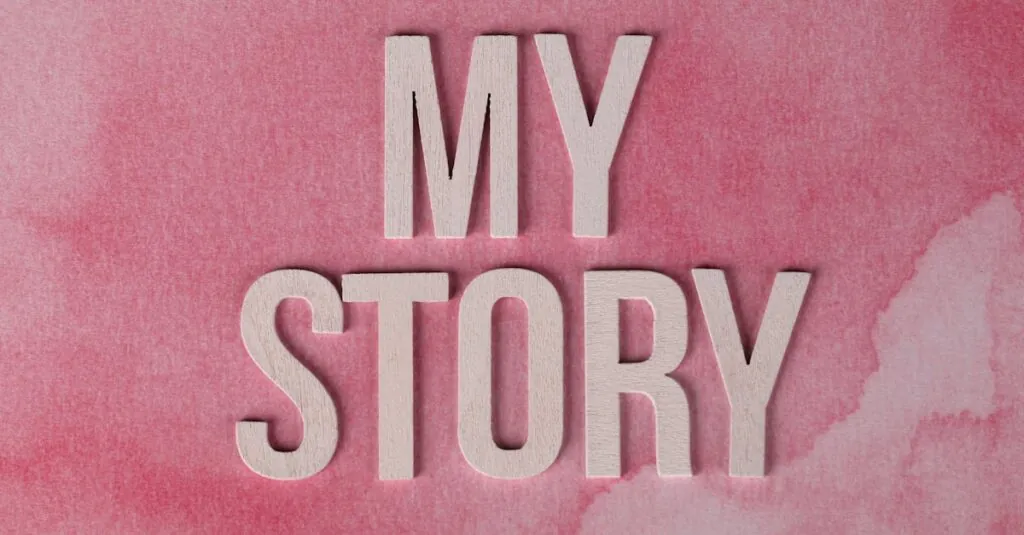Table of Contents
ToggleIn a world overflowing with information, civic storytelling emerges as the superhero we didn’t know we needed. It transforms mundane facts into compelling narratives that ignite community engagement and spark meaningful conversations. Imagine if your neighborhood’s history could be told like a gripping novel—complete with plot twists, relatable characters, and a dash of humor. That’s the magic of civic storytelling.
This powerful tool not only connects people to their roots but also empowers them to take action. When citizens share their stories, they create a tapestry of experiences that can inspire change and foster unity. So grab your cape, because diving into the world of civic storytelling might just make you the next local legend. Whether you’re a seasoned storyteller or a curious newcomer, there’s a tale waiting to be told, and it could change everything.
Understanding Civic Storytelling
Civic storytelling creates engaging narratives from everyday information. This practice fosters community engagement and dialogue.
Definition and Importance
Civic storytelling involves sharing personal narratives that highlight local issues and foster connections among individuals. It serves as a bridge, linking diverse experiences and perspectives within a community. By transforming personal stories, civic storytelling enhances empathy and awareness. This method encourages collective action, driving social change and uniting community members around common goals. Engaged citizens participate more deeply, fostering a collaborative atmosphere where voices are heard and valued. Ultimately, civic storytelling empowers individuals, inspiring them to take ownership of their narratives and influence community dynamics.
Historical Context
Civic storytelling traces its roots back to ancient civilizations, where oral traditions preserved culture and values. Communities utilized storytelling to relay important events and share wisdom across generations. In the 20th century, social movements harnessed this tool, using personal stories to amplify voices marginalized or overlooked. Activists and organizations realized the power of narrative to mobilize public opinion and drive change. As digital platforms emerged, storytelling evolved, allowing broader audiences to connect and share experiences. This historical evolution demonstrates how civic storytelling remains essential for fostering community ties and enabling meaningful dialogue.
The Role of Civic Storytelling in Communities
Civic storytelling plays a vital role in shaping community dynamics. It amplifies personal narratives, fostering deeper connections among individuals.
Empowering Voices
Civic storytelling empowers voices that often go unheard. It provides a platform for marginalized individuals, allowing them to share their experiences. When personal stories are told, they cultivate understanding and empathy. This practice encourages individuals to articulate their concerns, experiences, and aspirations more openly. By valuing diverse perspectives, communities strengthen their ties and promote inclusivity. The ongoing exchange of these narratives builds a supportive environment. Engaged citizens extol the importance of each unique story, reinforcing the idea that everyone has a valuable contribution.
Fostering Engagement
Civic storytelling fosters engagement across various groups within a community. It invites participation and dialogue, creating opportunities for individuals to come together. Storytelling workshops can serve as a catalyst for collaboration and interaction. When residents share their histories, they inspire others to join the conversation. Community events centered on storytelling often draw larger crowds, highlighting collective interests and pressing issues. Increased engagement leads to a more vibrant community atmosphere. People feel motivated to take part in local initiatives when they understand the impact of shared experiences.
Techniques and Approaches
Civic storytelling employs various techniques that foster engagement and connection within communities. These methods enhance the impact of individual narratives, nurturing collective action.
Narrative Structures
Effective narrative structures guide civic storytelling. Familiar formats like the hero’s journey engage audiences while drawing them into the story. Chronological storytelling presents events in the sequence they occurred, allowing listeners to follow along easily. Alternatively, thematic narratives focus on specific issues, connecting diverse experiences related to a common theme. Using dialogue within stories adds depth, showcasing different perspectives and enriching the narrative. The inclusion of sensory details immerses the audience in the experience, making the stories more relatable and impactful.
Digital Platforms
Digital platforms amplify the reach of civic storytelling. Social media channels like Facebook and Instagram provide spaces for sharing stories quickly and widely. Blogs enable deeper exploration of narratives, allowing for longer, more nuanced discussions. Podcasting offers an audio format, which connects through voice and tone, enhancing emotional resonance. Online video platforms like YouTube enable visual storytelling, captivating audiences with dynamic content. Implementing hashtags improves discoverability, attracting a broader audience and promoting community conversations around the shared narratives.
Case Studies of Successful Civic Storytelling
Civic storytelling showcases powerful narratives that inspire change. Various case studies highlight successful implementations across communities.
Notable Examples
One notable example includes the “Humans of New York” project. This initiative collects and shares personal stories from New Yorkers, fostering empathy and connection among diverse populations. Another instance is “StoryCorps,” where individuals record conversations about their life experiences. This platform promotes understanding across generations and cultures. Additionally, the “We the People” project encourages citizens to share stories related to their civic experiences, empowering them to address local issues collectively. Each example exemplifies how storytelling can bridge gaps and spark community dialogue.
Lessons Learned
Communities benefit from prioritizing authenticity in storytelling. Authentic narratives resonate more with audiences, fostering deeper connections and engagement. The success of these examples demonstrates the need for diverse voices. Inclusion amplifies perspectives, strengthening community ties. Moreover, storytelling should prioritize collaboration among participants. Collaborative processes lead to richer, more impactful narratives. Finally, leveraging digital platforms enhances reach. The ability to share stories online allows for broader engagement and fosters ongoing community discussions.
Challenges and Opportunities
Civic storytelling faces challenges, yet it also presents significant opportunities for community transformation.
Potential Obstacles
Funding limitations restrict many civic storytelling initiatives, which can lead to reduced resources for workshops and events. Lack of digital literacy prevents some individuals from effectively using technology to share their stories. Furthermore, societal biases hinder the visibility of marginalized voices, making it difficult for those narratives to gain traction. Resistance to change among specific communities can also stifle engagement, limiting participation in storytelling projects. Finally, maintaining genuine representation becomes challenging when storytellers face pressure to conform to dominant narratives.
Future Trends
Trends in civic storytelling are evolving, especially with the growing influence of digital platforms. Increased integration of virtual reality may enhance the storytelling experience, allowing audiences to immerse themselves in narratives. Budget-friendly tools are becoming available, enabling communities to create and share stories more easily than before. Collaborative storytelling initiatives are on the rise, encouraging participation from diverse stakeholders, which strengthens community bonds. Social media’s role is expanding, facilitating real-time engagement and dialogue around personal narratives. As these trends unfold, civic storytelling continues to empower communities by amplifying voices and fostering connection.
Civic storytelling stands as a vital force in shaping communities and fostering connections. By weaving personal narratives into the fabric of civic life, individuals can inspire collective action and cultivate empathy. This practice not only empowers marginalized voices but also enriches the dialogue within diverse groups.
As communities continue to navigate challenges and opportunities, the techniques of civic storytelling will evolve alongside digital platforms. Engaging with this powerful medium opens doors for collaboration and understanding. Ultimately, every story shared can spark change, encouraging a more inclusive and vibrant community atmosphere.




